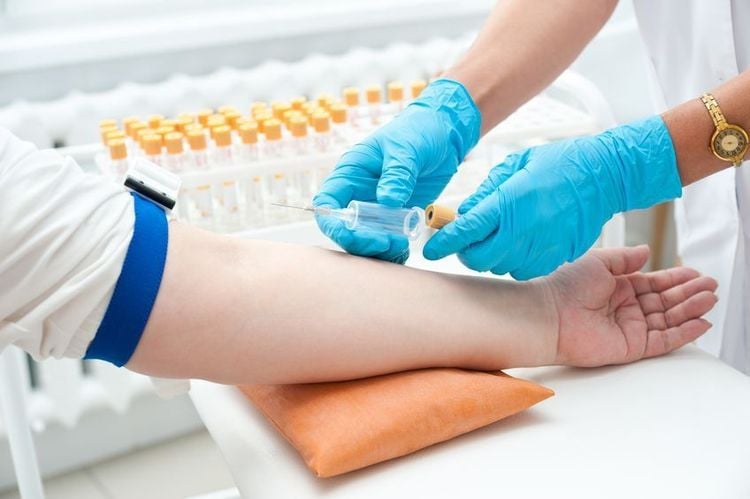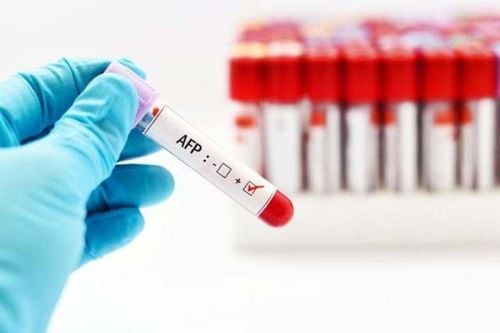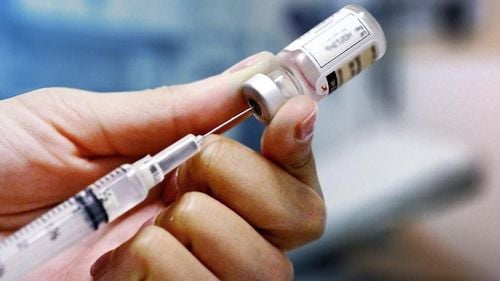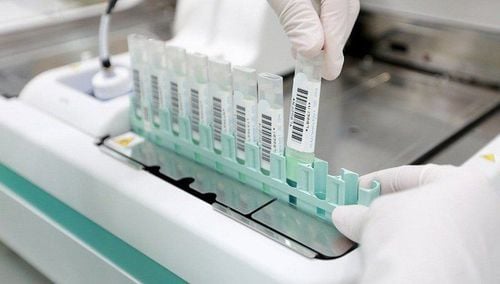This is an automatically translated article.
Primary lead testing is a method of measuring lead levels in the blood at the time of sampling. The purpose of the lead test is to assess the level of lead poisoning and monitor the effectiveness of treatment for patients with previous lead exposure.
1. What is the danger of lead poisoning?
Lead has the chemical symbol Pb, it is a heavy metal that can be found in everyday human activities such as burning fossil fuels, mining or from manufacturing activities.
Lead has a greenish-gray color, it is often used in the production of batteries, X-ray shielding devices or materials and corrosives in construction,... However, lead has strong toxicity and it is dangerous to human health.
The human body is often exposed to lead through eating lead contaminated foods, inhaling lead-containing dust or fumes... When the human body is poisoned with lead, it will have adverse effects. to many organs in the body. Specifically, lead poisoning can:
Disrupt the central nervous system causing nerve cells to be killed, thereby leading to anemia due to inhibition of red blood cell synthesis; Lead can also reduce the excretion of uric acid through the urine, thereby causing gout and damage to kidney cells, blood vessel walls increase contractility, leading to increased blood pressure; In addition, lead poisoning also reduces the reproductive function of men and women, and the production of important endocrine hormones is also reduced. For infants, if exposed to lead, it will be extremely dangerous and leave many serious consequences such as permanent cognitive decline, impaired basic behaviors, and damaged bone cells. will severely reduce height; For pregnant women, lead poisoning will cause the fetus to be poisoned with lead, thereby having a high risk of premature birth, even miscarriage, and growth retardation when the baby is born, increasing the risk of malformations. disability later. As a dangerous condition, if the patient notices the following symptoms, it is necessary to have a lead test:
For adults: The patient has symptoms of lightheadedness, confusion, delirium, impaired memory, drowsiness, insomnia, coma, convulsions, facial paralysis, ... In addition to these conditions, the patient also has anorexia, abdominal pain, constipation, a metallic taste in the mouth, bone and joint pain often, decreased sex drive, impaired reproductive function, easy anemia, kidney disease, high blood pressure, cataracts,... For young children: Young children Lead poisoning is often difficult to detect, unless the poisoning is severe. At that time, children often have symptoms of coma, convulsions, irritability, fussiness, loss of appetite, abdominal pain and vomiting. In addition, children's normal activities are also impaired, slow thinking, reduced ability to listen and concentrate, stunted body, slow development.
2. In what cases is the lead test indicated and what does it mean?
Is a test done with blood samples taken from the vein and blood from the heel of a child or urine in 24 hours. The normal allowable value of lead content in blood is about ≤ 40μg/dL, urine is about 0.3 - 1.8μg/dL. Lead testing is performed for the following purposes:
Diagnosis of lead poisoning: When an adult or child has signs and symptoms that suggest lead poisoning, the doctor will order the patient to perform a test. Measure lead levels in blood or urine. From this test can assist the doctor in accurately diagnosing lead poisoning and how much. Screening for lead poisoning: Children at high risk of lead poisoning will be screened, especially children aged 1-2 years. When the lead level in the child's blood is > 5 μg/dL, the lead test is recommended to be used to manage as well as monitor the treatment status of the disease. In addition, the lead test is also used to screen workers who work in high-risk environments for lead poisoning such as automobile factories, aluminum smelters, etc. > 40 μg/dL of a worker, it is recommended that a lead test every 2 months be performed for close monitoring.
However, each human body will have a different level of excretion of lead, so in addition to performing a lead concentration test, the patient needs to combine some other tests to accurately diagnose the condition. as well as lead poisoning.

Xét nghiệm chì chính là một phương pháp đo nồng độ chì trong máu tại thời điểm lấy mẫu
3. Lead test procedure
Blood lead testing should be performed in an experienced testing facility and with appropriate medical equipment. The procedure for doing a lead test is as follows:
Heel blood sample:
For a baby's heel blood sample, the doctor will clean the skin of the heel with alcohol and then take a small sterile lancet to puncture. Collect a few drops of blood into a dropper. Once enough blood has been collected, use a gauze pad or cotton ball and place it over the puncture site. Pressure will be maintained over the puncture site rapidly and then a small bandage is usually applied to the site of blood collection. After the heel blood is drawn, the blood sample should be preserved to avoid contamination of the sample. If the heel test is positive for lead, a blood sample will be taken from a vein to confirm the results. Blood sample from a vein:
When blood is drawn from a vein, a medical professional will wrap an elastic band around the upper arm to prevent blood flow. This makes the veins underneath the arm larger, making it easier to insert the needle into the vein. Clean the needle site with alcohol, then place the needle in the vein. More than one needle bar may be required. Attach a tube to the needle to fill it with blood, and then remove the bandage from the arm when enough blood sample has been collected. Finally, place a gauze or cotton ball over the needle site when the needle is removed and apply pressure to the site of the blood draw and then cover. Lead poisoning is very dangerous in both children and adults, but is often more harmful to children because their brains and other organs are still developing. Adults with lead poisoning often tend to recover better because of the digestive tract than children. Therefore, children at risk and signs of lead poisoning should be screened for lead as soon as possible.
Besides, each person has a different ability to excrete lead, so the lead test results can only show a part of lead poisoning, so to diagnose the level of lead poisoning, it is necessary to combine testing and clinical examination. Currently, Vinmec International General Hospital is one of the leading prestigious hospitals in the country, trusted by a large number of patients for medical examination and treatment. Not only the physical system, modern equipment: 6 ultrasound rooms, 4 DR X-ray rooms (1 full-axis machine, 1 light machine, 1 general machine and 1 mammography machine) , 2 DR portable X-ray machines, 2 multi-row CT scanner rooms (1 128 rows and 1 16 arrays), 2 Magnetic resonance imaging rooms (1 3 Tesla and 1 1.5 Tesla), 1 room for 2 levels of interventional angiography and 1 room to measure bone mineral density.... Vinmec is also the place to gather a team of experienced doctors and nurses who will greatly assist in diagnosis and detection. early signs of abnormality in the patient's body. In particular, with a space designed according to 5-star hotel standards, Vinmec ensures to bring the patient the most comfort, friendliness and peace of mind.
Please dial HOTLINE for more information or register for an appointment HERE. Download MyVinmec app to make appointments faster and to manage your bookings easily.













